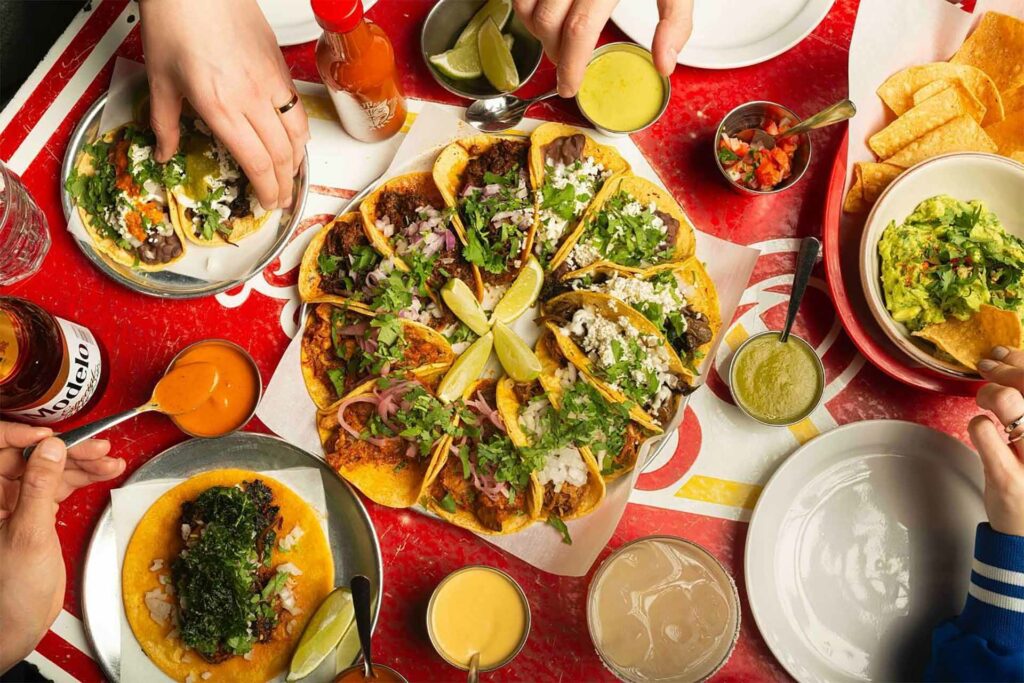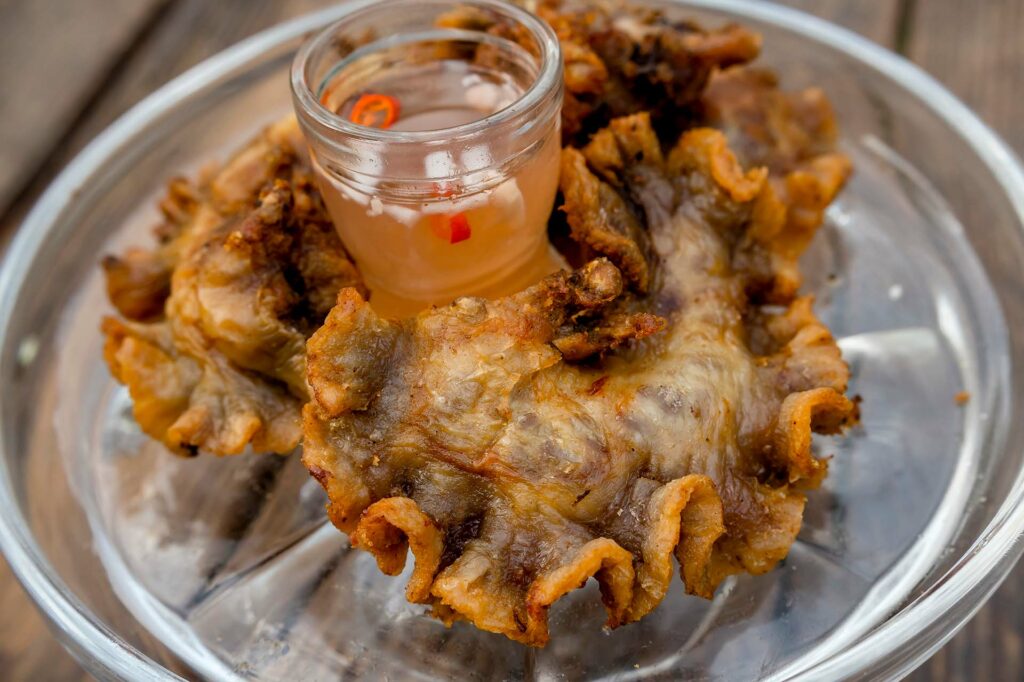What is kare kare?
Kare-Kare is a popular and beloved dish in Filipino cuisine. It is a rich and flavorful stew made with oxtail, beef tripe, and/or various cuts of beef and simmered in a thick, peanut-based sauce. The dish is known for its distinct orange colour and creamy consistency.
Kare-Kare also includes a variety of vegetables such as eggplant, bok choy, and string beans, which are cooked alongside the meat and complemented by the nutty flavour of the sauce. Some versions of Kare-Kare may include additional ingredients like banana blossoms, pechay (Chinese cabbage), or ground roasted peanuts to enhance the taste.
Traditionally, Kare-Kare is served with bagoong, a fermented shrimp paste, on the side. This condiment provides a salty and savoury contrast to the rich flavours of the stew.
Kare-Kare is a dish often enjoyed during special occasions, family gatherings, or simply as a comfort food. Its unique blend of flavours and textures makes it a must-try for those seeking to explore Filipino cuisine.
How to Make Authentic Kare Kare
Stew Ingredients:
- 1 kg oxtail, cut in 2-inch pieces
- 1 bunch string beans (bok choy), cut into 2-inch lengths
- 2 eggplants, sliced into 1-inch thickness
- 1 bunch pechay (Chinese cabbage), leaves separated
- 1 banana heart, cut into chunks (optional)
- 1 large onion, chopped
- 6 cloves garlic, minced
- 4 cups water
- 1 tsp salt
- ½ tsp black pepper
Peanut Sauce Ingredients:
- 1 cup smooth peanut butter, unsweetened
- ¼ cup ground rice (can be substituted with rice flour)
- 2 cups water
Shrimp Paste Sauce Ingredients:
- ½ cup shrimp paste (bagoong alamang)
- 2 cloves garlic, minced
- 1 small onion, chopped
- 1 tomato, chopped
- 2 tsp vinegar
- 1 tsp sugar
- ½ cup water
Instructions:
- In a large pot, place the oxtail and 4 cups of water. Bring it to a boil over medium heat, then reduce to low and simmer until the meat is tender. This may take about 2 to 3 hours. You may also use a pressure cooker to reduce the cooking time. If the water level drops too low, add more water as necessary.
- Once the meat is tender, remove from heat and set aside. Keep the broth.
- While the meat is cooking, prepare the peanut sauce. In a pan, toast the ground rice over medium heat until lightly browned. Be careful not to burn it. Set aside.
- In the same pan, add 2 cups of water and the toasted ground rice. Stir constantly to prevent any lumps from forming. Once the mixture has thickened, add the peanut butter and stir until well blended. Set aside.
- Now, in a large pot or wok, sauté the garlic and onion until the onion is translucent.
- Add the cooked oxtail, followed by the peanut sauce. Stir well to combine.
- Add salt and pepper, then let it simmer for 10 minutes over low heat, stirring occasionally.
- Add the eggplant, string beans, and banana heart. Cover the pot and let it simmer for another 10 minutes, or until the vegetables are tender.
- Add the pechay leaves last, cover the pot again, and let it simmer for 2 more minutes.
- For the shrimp paste sauce: In a separate pan, sauté garlic, onion, and tomato until they are soft. Add the shrimp paste, vinegar, sugar, and water. Simmer for 5 minutes.
- Taste the Kare-Kare and adjust the seasoning if needed. Serve hot with a side of bagoong sauce and a bowl of steamed rice. Enjoy your authentic Filipino Kare-Kare!
Note: The authentic recipe uses “palayok” or clay pot for cooking, but a regular pot or wok can work too.
Final Thoughts
There’s a special kind of magic that happens when you take that first spoonful of Kare-Kare, feeling the rich peanut sauce merge with the tender oxtail and fresh vegetables. The distinct taste of the bagoong adds that unique punch to every bite. As they say in the Philippines, it’s “Sarap!” – delicious!
This humble Filipino stew is a testament to the country’s rich and diverse culinary heritage. Cooking Kare-Kare may initially seem like a challenge, but it’s well worth the effort. By breaking down the steps in this blog, we hope you have gained the confidence to conquer the kitchen and cook Kare-Kare like a pro.
The beauty of exploring Filipino cuisine is that there’s always something new to discover and learn. There’s an entire spectrum of flavours waiting to be unravelled – from the vinegary tang of Adobo to the creamy goodness of Halo-Halo. As we’ve seen with Kare-Kare, even the most complex dishes can be conquered in your kitchen.
The challenge now is to push those boundaries even further, to take the plunge and explore what Filipino cuisine has to offer. Our kitchens are a playground, and every meal is an opportunity to travel, explore, and fall in love with new tastes and textures.
So, grab your aprons, heat up those pans, and let’s continue our culinary adventure. The world of Filipino cuisine is vast and inviting – so dive in! The next delicious dish is just a recipe away.
And as we say in Filipino, “Kain na!” – Let’s eat!






3 Responses
What an incredible curry/stew dish! Can I make it without oxtail and what can I use instead? I can’t always find it.
Any kind of beef could be used as a replacement but this is an oxtail dish through and through so it’s best with it
This sounds so rich and satisfying. So many amazing flavors.